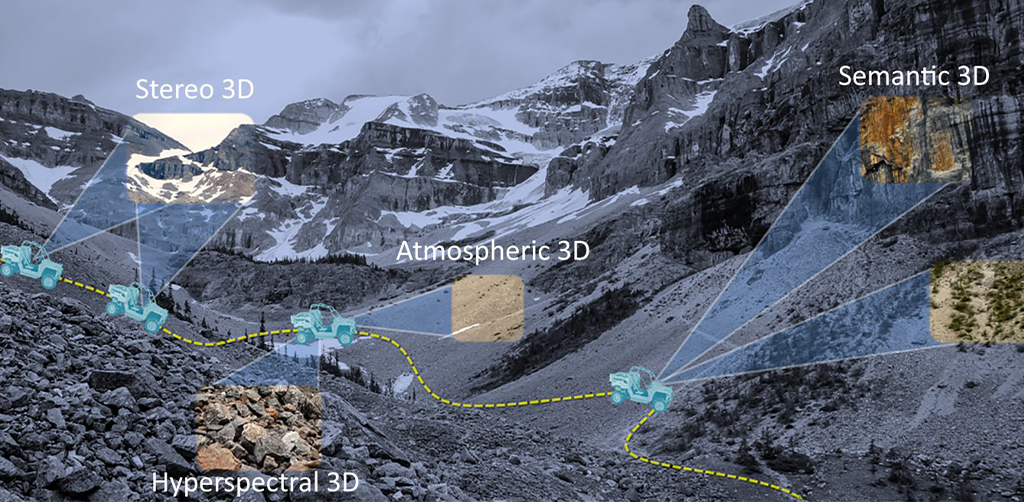Stealth Driverless Cars without Visible Light?
Goyal will team with MIT to advance DARPA’s Invisible Headlights program, which uses thermal emissions as a primary data source for autonomous vehicle navigation

By Emma Silva for Center for Information & Systems Engineering
Vivek Goyal, Professor (ECE) and a CISE Faculty Affiliate, recently received a Defense Advanced Research Projects Agency (DARPA) subaward for his work in connection with the agency’s Invisible Headlights program. Professor Goyal is working under an award to MIT entitled, Super Headlights: Superconducting Nanowire Detectors for Passive Infrared Sensing.
The DARPA Invisible Headlights program has a very ambitious goal—to utilize thermal emissions as a primary data source for autonomous vehicle navigation. Using passive thermal emissions to navigate an unmanned vehicle has never been done before, and it is being attempted by Professor Goyal’s group in coordination with a team of researchers from MIT and several other institutions.

The BU team, led by Goyal, will focus on the development of data processing, modelling, and theory for the project. Karl Berggren, Professor of Electrical Engineering at MIT, leads the overall team and will focus on hardware, specifically the creation of the single-photon detectors needed to recognize these passive thermal emissions.
The sensors that the project will utilize must be able to sense longwave infrared light that is far beyond human perception. The sensors will have high spectral sensitivity, allowing them to recognize a wide range of light spectra. Sensors like this would have the ability to extract material properties, how much air the light has gone through to reach the vehicle, and properties of that air.
Objects on Earth emit light constantly. An example within human perception is when we see a glow from something that is hot. This is due to the fact that when an object is very hot, there is not only a lot of emitted light, but that light is mostly in the visible spectrum. When objects are less warm, there is less light emitted, and most of the light is at wavelengths that humans cannot see.
Nature gives an example of navigating using passive thermal emissions that are not visible to humans; specifically pit vipers. These snakes are able to see prey, even in the dark, due to the fact that their vision extends to much longer wavelengths. Goyal’s team is trying to create methods that are similar to this capability of pit vipers.
Goyal hopes that the project will be able to analyze and discover what could be possible within the realm of headlight-less autonomous navigation. The first phase of the project will focus on these discoveries, and to what extent passive thermal emission navigation may be possible. The second phase will focus on the development of detectors that would be capable of enabling thermal emission navigation.
The MIT team led by Berggren has worked together for years developing technologies within the family of superconducting nanowire single-photon detectors.
Goyal believes that the most evident application for this technology once developed is defense systems. The ability for unmanned vehicles to navigate themselves discreetly without any sort of headlights would be especially useful for military activity. “Due to the cost and complexity of implementing this sort of technology, it is likely it would be far from mainstream usage,” Goyal said.
Taking a step back, advanced sensors like this could be applied to a plethora of industries, such as environmental monitoring. The distinct accuracy of these sensors could render them useful in potentially detecting chemical pollutants from factories or tracking changes in greenhouse gas compositions that could enable scientists to further understand climate change.
The work being done on this project is extremely novel. “This is a project that has a lot of science to it that is not that well known, making it very exciting for me and for my colleagues,” says Goyal. “It poses uniquely open-ended challenges.”